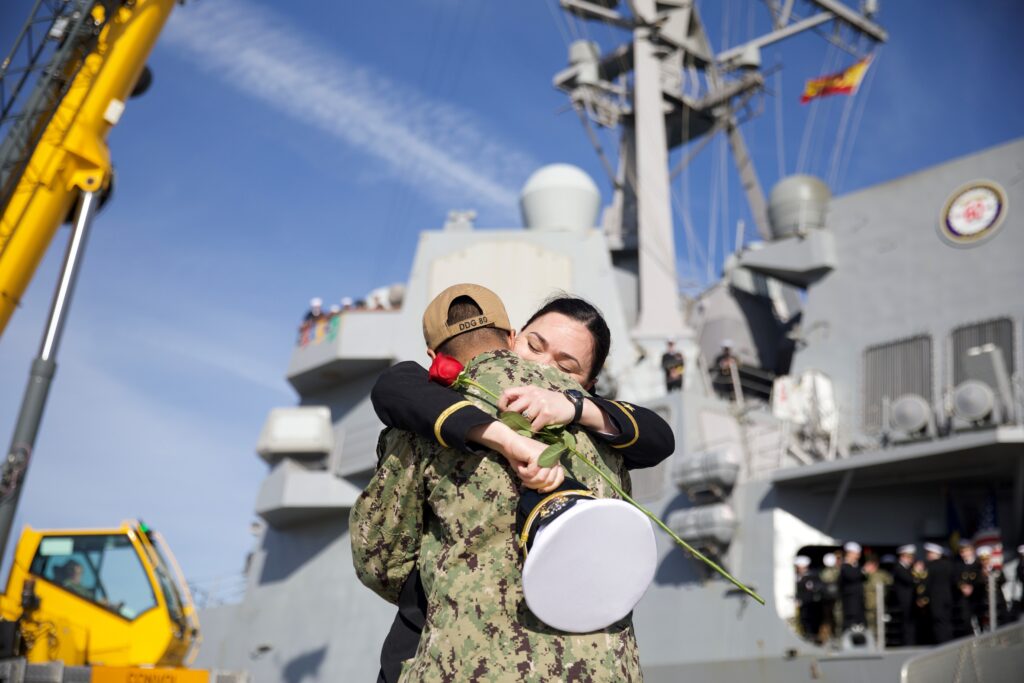
ROTA, Spain – The Arleigh Burke-class guided-missile destroyer USS Paul Ignatius (DDG 117) returned to Rota, Spain, Dec. 20, marking the completion of her first Forward-Deployed Naval Forces-Europe (FDNF-E) patrol in the U.S. Sixth Fleet area of operations, Lt. j.g. Andrew Halus, USS Paul Ignatius Public Affairs, said in a Dec. 20 release.
After commissioning in 2019, Paul Ignatius served three years in Mayport, Fla., before shifting homeports to Naval Station Rota, Spain, as part of the phased rotation of forward-deployed surface units assigned to Commander, Task Force 65/Destroyer Squadron 60.
The ship began its inaugural Sixth Fleet patrol in August, operating in the Arctic Ocean, Baltic Sea, and North Sea, providing theater antisubmarine warfare, air and missile defense, surface warfare, and expeditionary warfare capabilities to regional Allies and partners.
“I couldn’t be more proud of this crew,” said Cmdr. Corry Lougee, executive officer of Paul Ignatius. “We have been operational since February, and this ship continues to excel. Our Sailors executed the most successful homeport change to date, fought through the adversity of patrol, and now return to our new homeport stronger than ever. The mental toughness of this crew is beyond words and we are so appreciative of the overwhelming support from our families, the base, Destroyer Squadron 60, and the amazing Spanish people of Rota.”
In the Baltic Sea, Paul Ignatius integrated with the Kearsarge Amphibious Readiness Group and Marines from the 22nd Marine Expeditionary Unit, under the command of Amphibious Squadron Six and Task Force 61 Naval Amphibious Forces Europe/2d Marine Expeditionary Brigade (TF-61/2). The ship and her crew provided persistent presence in the Baltic, demonstrating solidarity with Baltic Sea Allies and partners. This involved frequent interoperability opportunities with NATO Allied Maritime Command (MARCOM)’s Standing NATO Maritime Group (SNMG) 1.
In November, Paul Ignatius participated in the Royal Navy’s Flag Officer Sea Training (FOST) alongside Royal Danish Navy Iver Huitfeldt-class frigate HDMS Niels Juel (F363), Royal Navy Type 23 frigate HMS Northumberland (F238), and German Navy Baden-Württemberg-class frigate FGS Sachsen-Anhalt (F224).
In the challenging December weather conditions of the Baltic Sea, the crew participated in the Finnish Navy Command-led exercise “Freezing Winds,” enhancing integration and interoperability with Finland. Freezing Winds involved units and personnel from 12 countries, including Finland, Sweden, the United States, and SNMG 1. The exercise highlighted joint maritime operations with both naval and amphibious aspects, testing allied and partner nations’ interoperability and proficiency through a variety of warfare areas.
The crew enjoyed port calls in Tallinn, Estonia; Riga, Latvia; Gdańsk and Gdynia, Poland; Plymouth, England; Helsinki, Finland; and Kiel, Germany during the patrol. In every port, they conducted personal exchanges and key leader engagements with host nation personnel, bolstering relationships and bonds at all levels to strengthen and develop operational effectives with Allies.
“The crew of Paul Ignatius has demonstrated time and again during this patrol that the U.S. Navy will sail, fly and fight in any conditions as we stand unified with partners and allies,” said Cmdr. Aaron Arky, Paul Ignatius’ commanding officer. “The ship and our embarked helicopters from HSM-79 have embodied NATO’s slogan that we are stronger together. Our nation’s dedication to the security of the Baltic region and Europe as a whole was on full display as we operated in the Baltic Sea and the North Sea this year.”
Four U.S. Navy destroyers, including Paul Ignatius, are based in Rota, Spain and are assigned to Commander, Task Force 65 in support of NATO’s Integrated Air Missile Defense architecture. These FDNF-E ships have the flexibility to operate throughout the waters of Europe and Africa, from the Cape of Good Hope to the Arctic Circle, demonstrating their mastery of the maritime domain.
- Red Sea Update - April 26, 2024
- U.S. Begins Construction on Temporary Pier to Deliver Humanitarian Aid to Gaza - April 26, 2024
- IKE Carrier Strike Group Arrives in the Eastern Mediterranean - April 26, 2024






